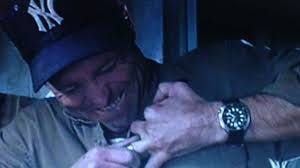Hi friends,
Before I jump in, I want to share this special I’m hosting with one of my local indie bookstores. Through December 31, if you buy or order a copy of Endpapers through Buffalo Street Books (in person or online), it will come with a free copy of Boys/Girls—a limited-edition Z-fold chapbook, with flash fiction and poetry by J. Robert Lennon, Gina Keicher (Nutt), Daniel Peña, Matthew Novitsky, Sarah Jefferis, Jose Perez Beduya, Amy C. Whitney, and me. Published by LunaSea Press (that’s me!) in 2015.
If we’re connected on Bluesky, you might have noticed me posting a bit about dramatic storytelling recently. That’s because I’ve been reading through a draft of my novel-in-progress, which is a literary thriller of sorts, and feeling like something is missing. Over the past month I’ve realized that the thing is drama.
As a literary writer, even when I strive to create drama, I tend to shy away from it, as if it will somehow infect the precious literary-ness of my story, but the truth is that all kinds of stories benefit from drama as much as they do from character development and good prose (however you define that).
Recently, I watched the 1989 sci-fi adventure The Abyss, and it was two hours and twenty minutes of pure drama. In the midst of searching the depths of the ocean for a lost nuclear submarine and encountering an aquatic alien species, Bud (Ed Harris) also argues with his ex-wife, Lindsey (Mary Elizabeth Mastrantonio), pulls off his wedding band in a fit of rage and throws it into a toilet, then fishes it out sadly and puts it back on his finger. Later, as their craft is breached and Bud’s about to drown, he uses his hand to try to stop a heavy metal door from sealing him in with the rising water. The ring is what both saves his hand and holds the door open long enough for someone to save his life. Of course, the movie ends with Bud and Lindsey locked in a romantic embrace.
This whole ring mini-drama has stayed with me for the weeks since I’ve seen the movie. On the one hand, it felt like an offensive cliché. From the moment Lindsey asked Bud why he was still wearing it, I could see what was coming. Maybe not specifically, but I knew the ring would be significant to their relationship—and that by the end of the movie the divorced couple would be back together.
On the other hand, when it all went down exactly as I’d predicted, it was so satisfying. That’s the thing about this kind of dramatic trope. Even though we know what’s about to happen, the tension still has the power to draw us in because we don’t know how it’s going to get there. Especially when there are many chances along the way for things to go off track. That’s the real drama.
I couldn’t help but wonder what it would be like to have the confidence to write something like that wedding ring into my literary novel. But after chewing on it for some time, I realized that I already have. In fact, there’s more than one version of the ring in there. So my new question became: Why is it still feeling so devoid of drama?
Here’s what I’ve come up with: The two reasons why this subplot works so well for me in the film are (1) because it’s consistent with Bud’s character, and (2) no one shies away from the bit. Ed Harris leans absolutely into the emotion both during his argument with Lindsey and afterward, when he chucks the ring into the toilet and then fishes it back out. The toilet water stains his hand blue for the rest of the film, serving as a reminder of what he’s done to get the ring back. When he’s about to drown and wedges his hand into the doorway, the camera pans in unapologetically to the ring. And once Bud’s safe, he kisses it.


Simply put, I’ve realized it’s not enough to include a “wedding ring” in my novel. I have to commit to it and ensure that it’s playing in full harmony with the larger story, both character- and plot-wise.
So in this revision, that’s one of the main things I’m focused on. In every chapter, I’m challenging myself to examine how everything that happens fits into the story as a whole, how each element raises the stakes or increases—or releases—dramatic tension. I’m learning that the best drama comes from the deepest character development, and it works best when I don’t shy away from it.
If you’re feeling like your project needs more drama, consider whether you have a plot element—or multiple ones—like the ring. Ones that are propelling the story forward while simultaneously holding pieces of it together. Then, perhaps more importantly, think about how true that drama feels to your character(s) and how committed you are to seeing it through all its twists and turns.
Meanwhile, Happy holidays and Happy New Year! I hope you’re celebrating, relaxing, or doing whatever renews you. And I look forward to connecting in 2025!
Yours,
Jen






I needed this today! While revising my novel, I have come upon a high-drama vs. low-drama choice to make... thank you for the reminder to at least consider the more dramatic choice and just see where it leads
Aha, great insight. Even though I haven't seen this film, the toilet water staining Bud's hand blue is going to stay with me now. I think I hold back, and I'll look for places to commit, now, as I go through my next revision. Thanks, Jennifer.